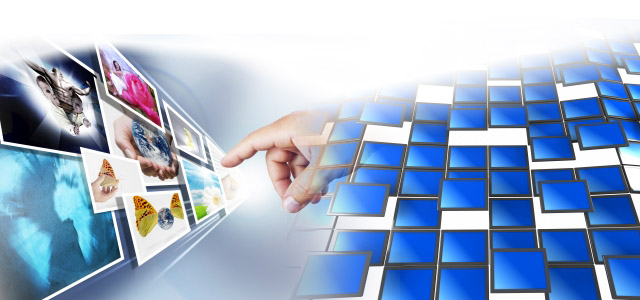The word “multimedia” is very popular and it essentially means transmitting information in different ways at once. We could also describe it as a way to integrate different media elements, so they can be presented in an interactive and attractive manner. In other words, multimedia also means the ability to communicate in multiple ways. Information is presented traditionally only in a single medium, such as verbal and paper. With the relatively recent development of electronics, we could get information not only from radio and television, but also from computers and mobile devices.
Multimedia is often seen as a computerized form of audio, graphics, texts, videos and animations that are often combined. The advent of more powerful hardware and high-resolution displays resulted in a markedly higher degree of utilizations of multimedia content. A typical multimedia utilization typically involves the use of digital technologies. It also integrates data, text, images and audio into seamless applications. This could be achieved through interactions with users. Here are important components of multimedia:
- Text: Text is one of the oldest forms of information transmission and it started when people first used symbols to express their intention to others. Written information helps people to retain it for a much longer period of time, especially when it is written on stone. In fact, text is still an essential way to offer information and the Internet itself is still largely a text-based media, because people still find it easier to consume information-packed content through text.
- Graphics: It’s essentially a generic term to describe any pictorial-based information. When we talk about graphics, they don’t only about full-color pictures and drawings, but also arcs, curves, circles, polygons and even simple lines. Obviously, pictures can worth a thousand words, so it is immensely important add some graphical elements into our content. The rapid growth of technology has allowed for the use of visual imagery and graphics for various multimedia projects.
- Audio: Audio is a sensation we feel due to the stimulation of our auditory mechanism. In this case, information is transmitted through vibrations and airwaves. The digital technology has enriched the use of audio-based information. Sound effects and music could add some interactivity and they may play with our emotions and perceptions. Music is a more complex form of sound and it is one of the most common elements of digital multimedia, as people regularly download songs.
- Video: Videos refer to moving pictures that are accompanied by synchronized sounds. Videos are relatively a newer form of information and they often catch more attention than text, graphics and audio. It can significantly dramatize and give an overall impact. YouTube and other video sharing services have expanded the use of videos on the Internet.
- Animation: Animation is often considered as a variant of video; but it could be consisted of moving objects that don’t require cameras and real-living actors to create. In fact, moving shapes can be considered as animation and they can be used as a simpler way to transmit information compared to videos.




